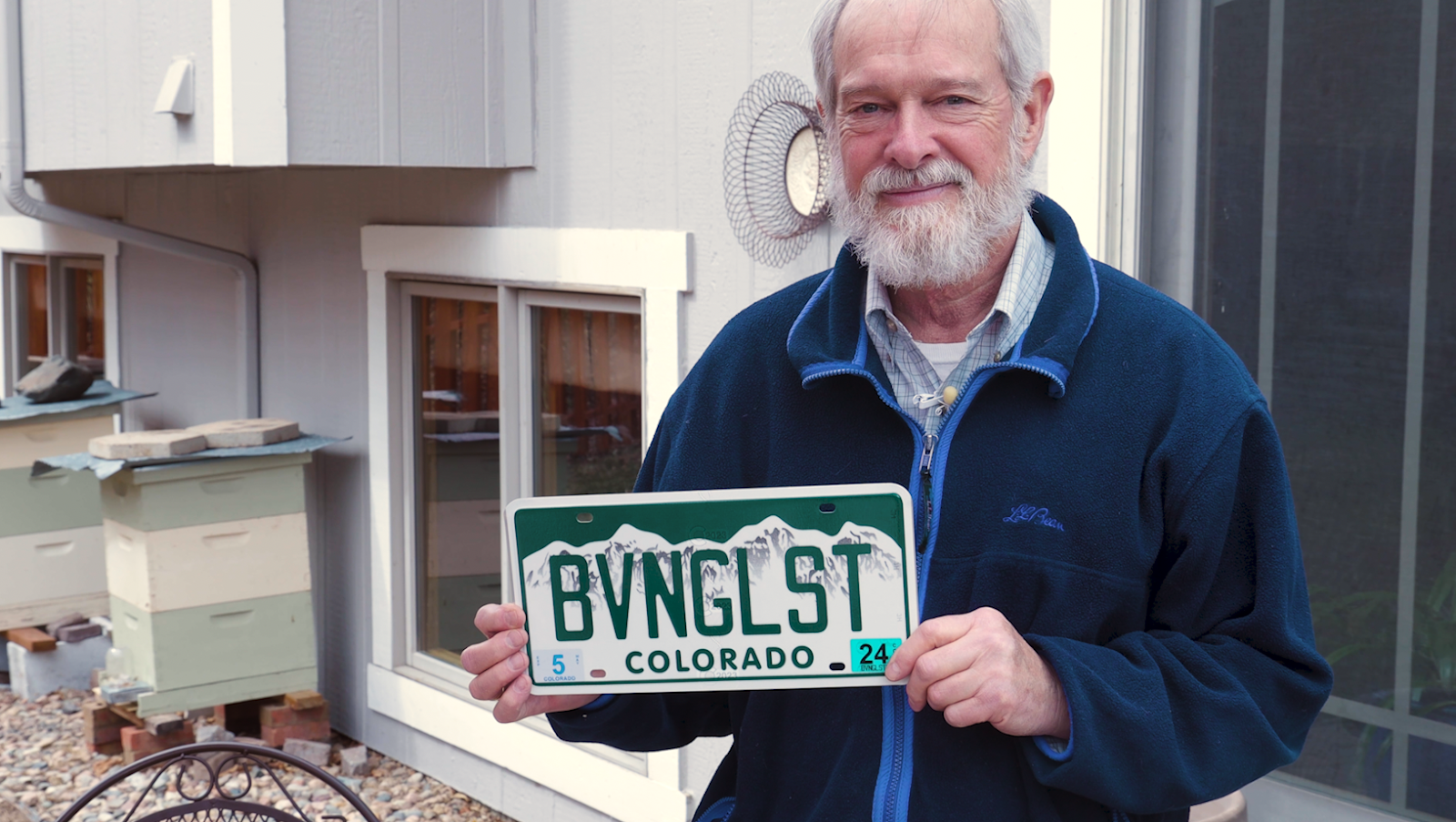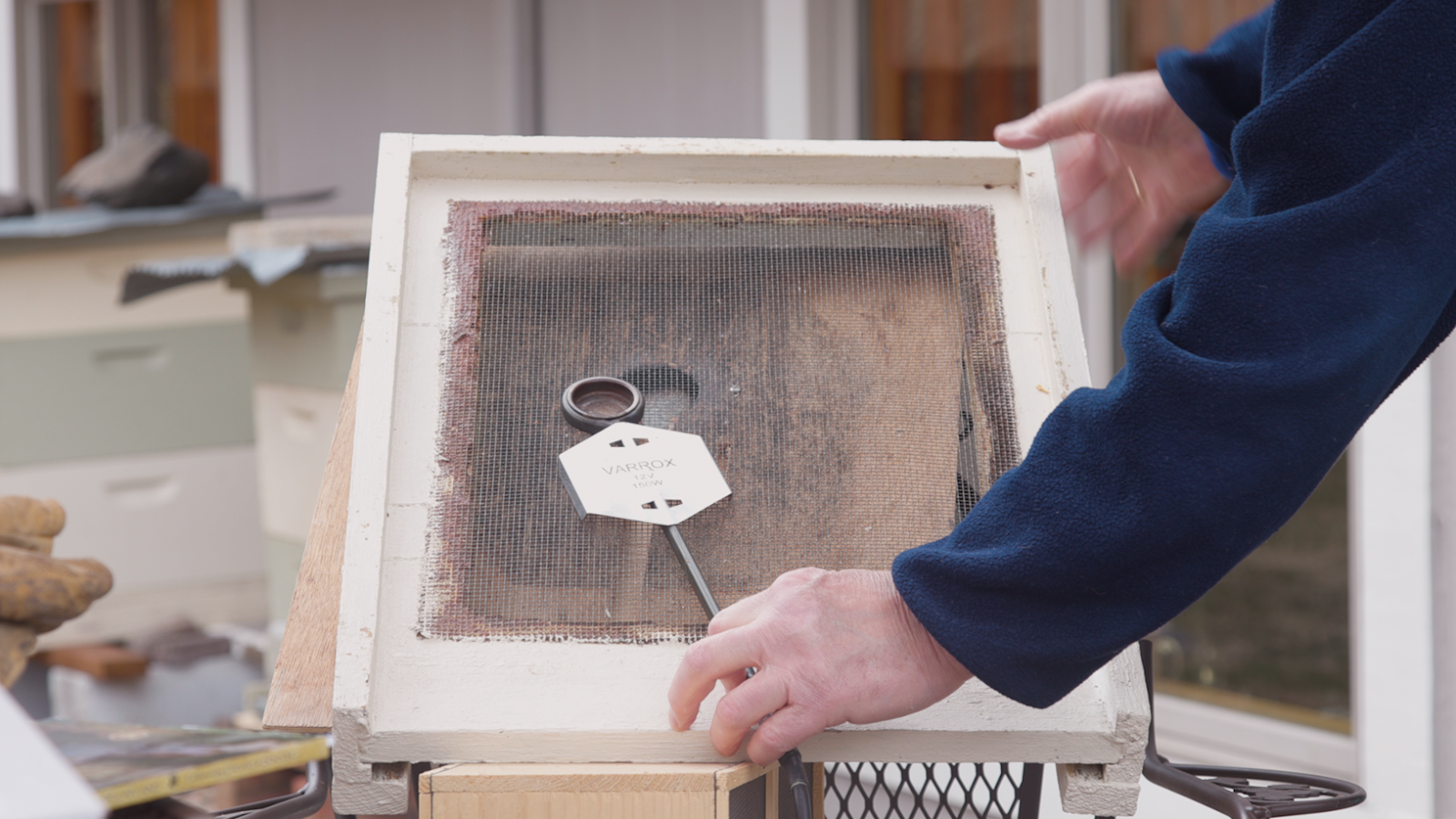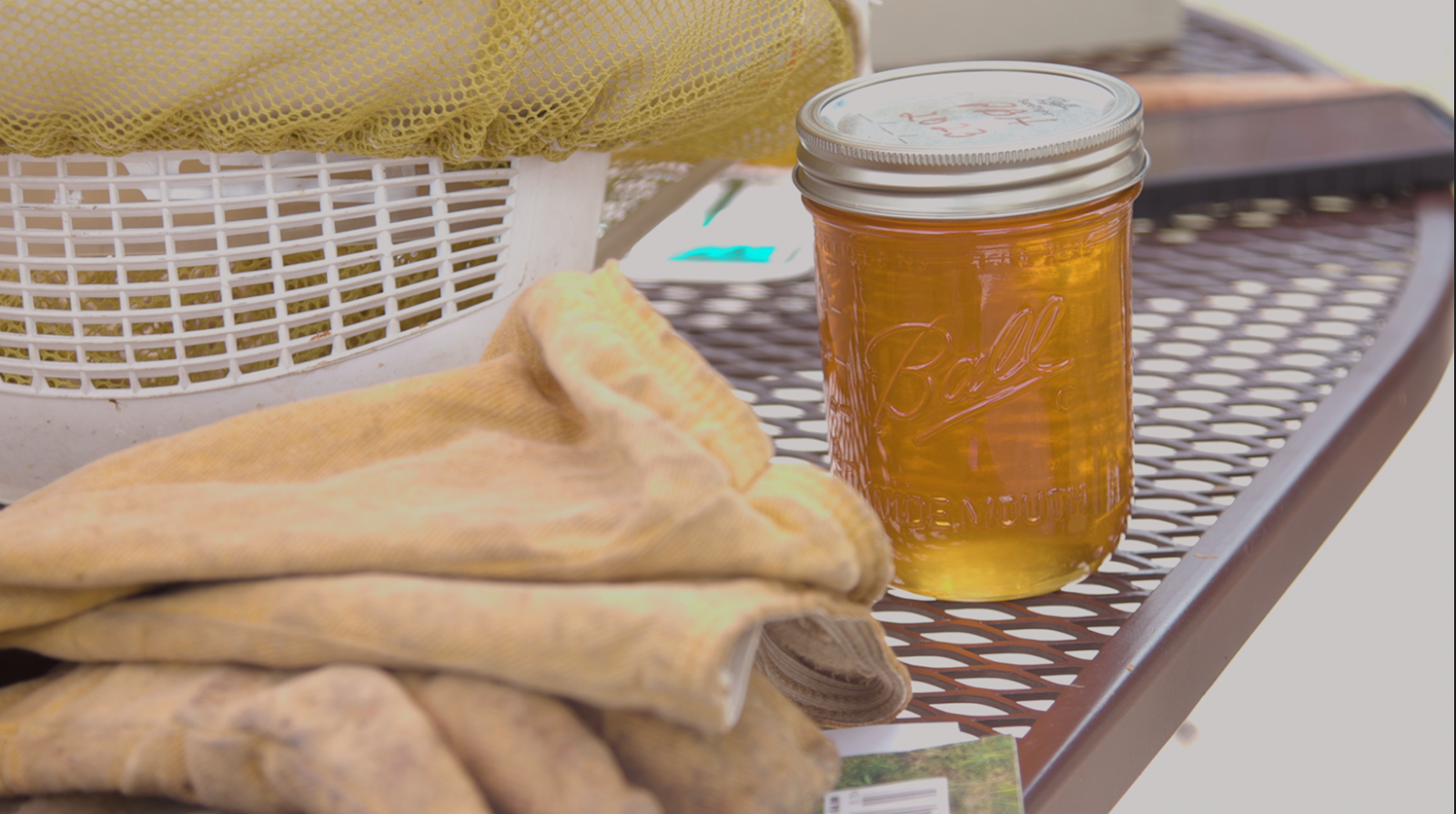The striped workers keeping Colorado colorful

COLORADO SPRINGS, Colo. — Despite being a life-long beekeeper and now president of the Pikes Peak Beekeepers Association (PPBA), Mike Daetwyler admits he still gets anxious when one of his thousands of honey bees gets a little too close for comfort.
Yet Daetwyler showed little fear when he walked over to one of his three active backyard honeybee hives and, bare-handed and unmasked, pulled out a baseboard. He shook off a few stubborn bees before returning to his beekeeping equipment-covered patio table, unconcerned and unscathed.
Daetwyler is one of hundreds of beekeepers active across Colorado Springs today, working to not only build and maintain fruitful hives, but to educate an often bee-wary public about the ecological and economic benefits of the honey bee.
“Bees are not lazy,” said Daetwyler, “They want to get out there and get back. So if they bump into you, it’s not a big problem. They just go around you and on to the hive.”
Daetwyler is a self-proclaimed “Beevangelist,” and he has a custom license plate to prove it. He built his first hive as a high schooler in 1967. With the help of his grandfather, Daetwyler controlled a swarm that had formed on his family’s farm.
He has been passionate about beekeeping ever since.

Daetwyler is the “Beevangelist” as recorded in the Colorado’s Department of Motor Vehicles.
Photo: Chase McCleary, Rocky Mountain PBS
Daetwyler had to halt his honey-making for a few decades to make room for college, a career in the Air Force and a family. As his military career began winding down, Daetwyler found himself eager to once again be one with the bees.
“I just didn’t want to sit around here and vegetate in retirement, and I had always thought that getting into beekeeping would be a fun activity,” said Daetwyler. “And that was true. It was a fun activity.”
Now, Daetwyler helps organize and operate a number of the PPBA’s services, including organizing monthly community meetings and leading the Beginner Beekeeping Class, which took place last month.
More than 130 families are current members of the association, which includes beekeepers and bee-lovers from a wide array of experiences, professions and ages.
The class dives deeper into the history of honey bees and beekeeping in the United States. Honey bees are not native to the U.S., explained Daetwyler. British colonists introduced the species to North America in the early 1600s.
The insect’s valuable pollinating powers inspired widespread hive movement across the country. Human-controlled expansion, amplified by the proliferation of feral hives forming from escaped bees, boosted honey bee population growth.
Since then, the honey bee has ingrained itself as an integral part of the nation’s pollinator community.
They play an enormous role gathering and distributing pollen from flowers and plants. A single, busy bee can potentially visit 5,000 flowers in one day; a colony of busy bees could reach up to 300 million in a day, according to the U.S. State Department.
And with some sources estimating that about 80% of crop plants grown around the world require pollination, a service valued at over $3 trillion dollars globally each year according to the USDA, it’s fair to say that honey bees are some of the country’s most important workers.
In fact, honey bees alone are believed to be responsible for as much as $30 billion annually in crops, and are almost entirely responsible for California almond production.
The demand for honey bees during almond season in California is so great, that they are transported from states across the nation, sometimes to the detriment of the colonies and other agricultural efforts.

Honey bees sometimes carry “pollen baskets” (pictured above) on their back legs, which they bring back to the hive for honey-making.
Photo: Chase McCleary, Rocky Mountain PBS
In addition to keeping hives in his own backyard, Daetwyler hosts honey bee hives at other interested yet less-equipped people’s homes. He has seen first-hand the impact the bees have had on even a small garden.
“One of our good friends who hosted a hive in their backyard, after the bees had been in their yard for a full season, said that the vegetables and the fruit [in her garden] doubled,” said Daetwyler.
Honey bee populations have wavered in recent decades. In 2006, scientists noticed a steep die-off, resulting in hive devastation named Colony Collapse Disorder (CCD). Reasons cited for CCD included increased use of pesticides and insecticides — including incredibly harmful neonicotinoids — as well as habitat loss, stress factors, and the intrusion of the harmful varroa mite.
However, honey bee populations have since rebounded, with recent data from the Census of Agriculture listing honey bees as the fastest recorded growing US animal populations in the country, with at just over 3.8 million in stock.
That’s an increase in almost one million hives in the last seven years, and a 31% increase since 2007. Considering that this count does not include feral honey bee populations, some think that there could be more honey bees around today than ever before.
Despite what the figures may indicate, this is no time for beekeepers to sit on their leather-gloved hands, particularly in harsh climates like Colorado.
Daetwyler has been sustaining his backyard hives throughout the winter with regular servings of sugar water. Without it, the bees may have starved. He stressed the importance of keeping his boxes closed during winter months, as cold Colorado temperatures are dangerous for the bees.
To fend off invading varroa mites, Daetwyler smokes his hives with vaporized oxalic acid. He has installed custom-built mesh frames into the bottom of his hives, which allow harmful varroa mites to fall through the floor so as not to infect other bees.

Daetwyler models some of the apparati he uses to protect his honey bees.
Photo: Chase McCleary, Rocky Mountain PBS
He hopes that his efforts, and the community he helps foster within the PPBA, will inspire other up-and-coming beekeepers in Colorado Springs.
Daetwyler uses his platform to dispel a few common honey bee myths as well.
The first is some bee-friendly fashion advice: white, smooth surfaces are in. Dark, furry clothes are out.
“One thing not to do when working with bees is to wear something… dark and fuzzy,” said Daetwyler. “The bears are what they’ve learned from… that dark, fuzzy things are not their friends.”
The second also pertains to the bees’ commonly assumed nemesis: bears.
“The bears are actually after the protein in the bees and in the larvae so they can fatten up for their winter stores,” said Datewyler.
“So if you always thought that they were going for the honey, you have been a victim of the ‘Pooh Bear Indoctrination.’”

While bears may be less interested in honey than expected, Daetwyler collects plenty, sometimes to the tune of 300+ lbs in his best years.
Photo: Chase McCleary, Rocky Mountain PBS
Chase McCleary is a multimedia journalist at Rocky Mountain PBS. Chasemccleary@rmpbs.org.